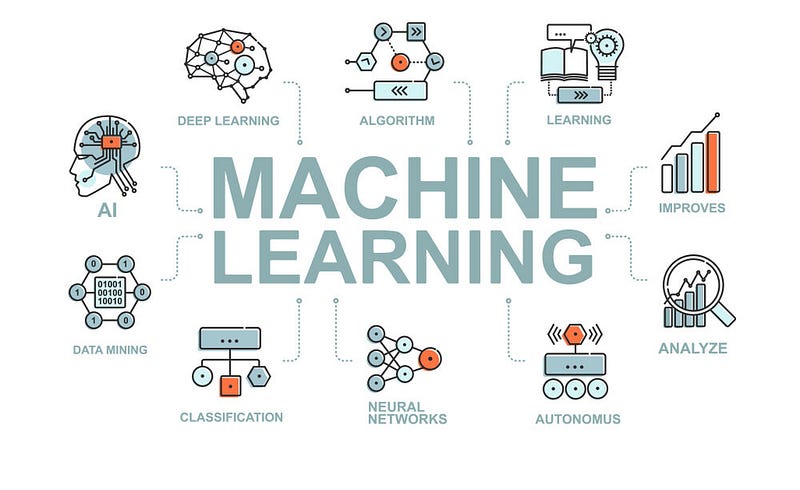
Introduction
Machine learning is an exciting and rapidly evolving field that has transformed the way we analyze data, make predictions, and solve complex problems. As the demand for machine learning experts grows, many aspiring ML enthusiasts are seeking resources and guidance to develop their skills and knowledge in this domain. This comprehensive self-study guide to machine learning provides a structured roadmap to help you navigate the learning process, master key concepts, and acquire the skills needed to excel in this fascinating field.
1. Understanding the Fundamentals of Machine Learning
Before diving into machine learning techniques and algorithms, it’s crucial to have a solid understanding of the fundamentals. This includes:
– Basic terminology: Familiarize yourself with essential machine learning terms and concepts, such as supervised and unsupervised learning, training and testing data, features and labels, and model evaluation metrics.
– Types of machine learning problems: Learn about the different types of machine learning problems, including classification, regression, clustering, and dimensionality reduction.
– Key concepts and principles: Study the core principles of machine learning, such as bias-variance tradeoff, overfitting and underfitting, and regularization.
Recommended resources for learning the fundamentals include introductory textbooks, online courses, and tutorials.
2. Developing a Strong Mathematical Foundation
Machine learning relies heavily on mathematical concepts and techniques. To be successful in this field, you’ll need to develop a strong foundation in the following areas:
– Linear algebra: Understand vectors, matrices, and operations such as matrix multiplication, transposition, and inversion.
– Probability and statistics: Learn about probability distributions, descriptive statistics, hypothesis testing, and Bayesian inference.
– Calculus: Master the concepts of derivatives, integrals, and optimization techniques, such as gradient descent.
You can build your mathematical foundation through college courses, online classes, or textbooks focused on these subjects.
3. Learning Popular Machine Learning Algorithms
Once you have a strong foundation in the fundamentals and mathematics, it’s time to dive into the various machine learning algorithms. Focus on learning the following popular algorithms:
– Linear Regression
– Logistic Regression
– Decision Trees
– Random Forests
– Support Vector Machines
– k-Nearest Neighbors
– Neural Networks
– Principal Component Analysis
– k-Means Clustering
For each algorithm, understand the underlying theory, assumptions, and limitations. Practice implementing the algorithms using popular programming languages and libraries, such as Python and scikit-learn.
4. Gaining Proficiency in Programming Languages and Tools
Proficiency in programming languages and tools is essential for implementing machine learning algorithms and building models. The most popular language for machine learning is Python, due to its simplicity, readability, and extensive library support. In addition to Python, consider learning R, which is widely used for statistical analysis and data manipulation.
Familiarize yourself with the following machine learning libraries and frameworks:
– Scikit-learn: A popular library for implementing various machine learning algorithms in Python.
– TensorFlow: An open-source machine learning framework developed by Google, primarily used for deep learning applications.
– Keras: A high-level neural networks API that can run on top of TensorFlow or other frameworks, making it easy to build and train deep learning models.
5. Working on Real-World Projects
Putting your knowledge and skills into practice is essential for gaining real-world experience and building a strong portfolio. Work on machine learning projects that involve:
– Data preprocessing and feature engineering: Learn how to clean, preprocess, and transform raw data into a suitable format for machine learning algorithms.
– Model building and evaluation: Implement various machine learning algorithms, fine-tune their hyperparameters, and evaluate their performance using appropriate metrics.
– Model deployment and maintenance: Understand the process of deploying machine learning models in production environments and maintaining them over time.
You can find project ideas and datasets on platforms such as Kaggle, UCI Machine Learning Repository, or by exploring real-world problems in your domain of interest.
6. Exploring Advanced Topics and Specializations
Once you’ve mastered the fundamentals and gained experience working on projects, consider exploring advanced topics and specializations within the field of machine learning. Some areas to consider include:
– Deep learning: Study neural networks, convolutional neural networks (CNNs), recurrent neural networks (RNNs), and other deep learning architectures used for tasks like image recognition, natural language processing, and speech recognition.
– Reinforcement learning: Learn about this type of machine learning, where an agent learns to make decisions by interacting with an environment and receiving feedback in the form of rewards or penalties.
– Natural language processing (NLP): Explore techniques and algorithms for processing, analyzing, and generating human language, including tasks such as sentiment analysis, machine translation, and text summarization.
– Computer vision: Dive into the field of computer vision, focusing on techniques for image and video analysis, object detection, and image segmentation.
7. Staying Up-to-Date with Industry Trends and Research
Machine learning is a rapidly evolving field, with new techniques and applications emerging regularly. To stay current, it’s essential to:
– Follow industry news and publications: Stay informed about the latest developments and trends in machine learning by reading blogs, attending conferences, and subscribing to newsletters.
– Engage with the machine learning community: Participate in online forums, attend local meetups, and engage with machine learning professionals and researchers on social media platforms.
– Read research papers: Regularly read and analyze research papers to deepen your understanding of advanced techniques and stay abreast of cutting-edge developments.
Summary
Embarking on a self-study journey in machine learning can be both exciting and challenging. This comprehensive guide provides a structured roadmap to help you navigate the learning process, covering the fundamentals, mathematics, popular algorithms, programming languages, tools, real-world projects, advanced topics, and industry trends.
By following this self-study guide, you’ll be well-equipped to develop the skills and knowledge needed to excel in the field of machine learning. As you progress, remember to continually challenge yourself, stay curious, and engage with the machine learning community to enhance your learning experience and achieve success in this dynamic and rewarding field.